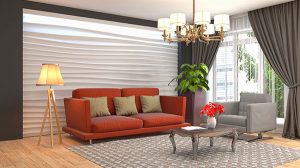Methods of Plastering: Types, Applications, and Step-by-Step Guide for Smooth Walls

We all dislike bumpy and rough surfaces on the walls. A smooth and even finish on the walls and ceilings in a newly built building adds a decorative touch and enhances its aesthetics. Plastering, a process used in both ancient and modern constructions to achieve these finishes, is crucial. There are different types of plastering depending on the desired result and purpose. This blog will shed light on how to plaster, the different types and methods.
What is Plastering?
Plastering involves applying a plaster mixture made of cement, sand, and water to walls, partitions, and ceilings. Plastering has the purpose of giving a surface a seamless and smooth finish, and strengthening it. Rendering, often referred to as Exterior Plastering in Auckland and other regions, is the term used for plastering exterior walls. The surface type and the number of coats to be applied depend on its purpose. Modern construction uses a variety of plasters to meet different needs, aesthetical tastes, and environmental conditions.
Uses of Plastering
Plastering is an important construction step that serves many purposes.
- Increased durability: Plastering is a protective layer that protects any surface. It also increases the lifespan of a building.
- Smoothing walls: Walls are often made of bricks, or have uneven surfaces. Plastering creates a smooth, appealing appearance.
- Aesthetic enhancement: Plastering enhances the appearance of surfaces with decorative patterns, paints, and textures.
- Fire resistance: Plastering is a barrier that prevents the spread of fire in the event of an accident.
- Insulation: Plaster acts as an insulator and soundproofing layer. Insulation can be made from thick ready-mixed plaster.
There are Many Types of Plaster.
Cement Plastering
A mixture of sand, cement and water is used to create a durable and strong surface. It is commonly used on the exterior of the building to protect the wall against severe weather conditions and environmental conditions. This method allows for a variety of finishes, including sand-faced and smooth cast.
Gypsum Plastering
Plaster of paris (PoP), also known as gypsum plaster is a mineral sulphate composed of dihydrate calcium sulphate. This material is used for interior surfaces because it dries fast and produces a smooth surface. Due to its low resistance to heat, it is not usually used outside. Gypsum, because of its fire-resistant qualities, is one of the most popular materials used for plastering in buildings that place a high priority on hygiene and cleanliness. The gypsum mix can be hardened using retarders or hardeners.
Mud Plastering
Mud plaster is a less common material today. It’s made of soil, dung or hay, and water. This environmentally friendly method is used for traditional and sustainable building practices. It gives the surface a rustic look. Mud plastering, even though it offers excellent thermal insulation and breathability is not used much in modern construction because of its traditional aesthetics.
Lime Plastering
To make lime plaster, sand, water and a little cement are mixed together in a 1:1 ratio. The mixture sets when it is exposed to air. The rustic and unique finish of homes can be achieved with lime plaster. It is an eco-friendly way to reduce the carbon emissions from cement plaster.
Waterproof Plaster
This method repels water and moisture, as the name implies. Bathrooms are often areas that experience moisture or dampness . Waterproof plaster is used to prevent water from seeping through walls and causing damage. The composition of this plaster is similar to that of cement, but it contains additional ingredients such as pulverised soap and alum. These chemicals seal the pores on walls.
How to Plaster a Surface Step-by-Step
Here are the steps you need to follow in order to get a professional and smooth finish on your plastering.
Prepare
First, dust and clean any imperfections from the surface. Replastering requires careful removal of old plaster. This will ensure that the new plaster adheres to the surface smoothly.
Priming the Surface
Sometimes, a PVA (Polyvinyl Acetate) adhesive is needed to be applied before plastering. This is done to ensure the plaster will adhere firmly to the surface. Before plastering, the surface shouldn’t be completely dried.
Mixing
It is important to mix the plaster in the correct proportions. Otherwise, it can result in a lumpy and uneven consistency. To avoid contamination, the plaster must be mixed with a bucket of clean water. A power mixer will produce a more uniform mix than the traditional method.
Applying
The first coat of plastering should be applied evenly from the bottom up. The mixture will adhere to the surface if you apply a firm, even pressure during the entire process. The trowel must be used to flatten the surface at the end of every stroke.
Finishing the Plaster
The trowel is used to smooth out any bumps or gaps that may have formed after the plaster has dried. The spray bottle can be used to slightly wet the plaster to help the trowel glide over the surface. Next, a second layer of plaster thinner is applied. After the plaster has dried completely, you can use sandpaper to smooth any rough edges.
Plastering, in general, is not an optional process but a necessary one when constructing a structure. It is not only important to have a strong, resilient structure but also for it to look attractive and comfortable.







